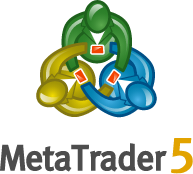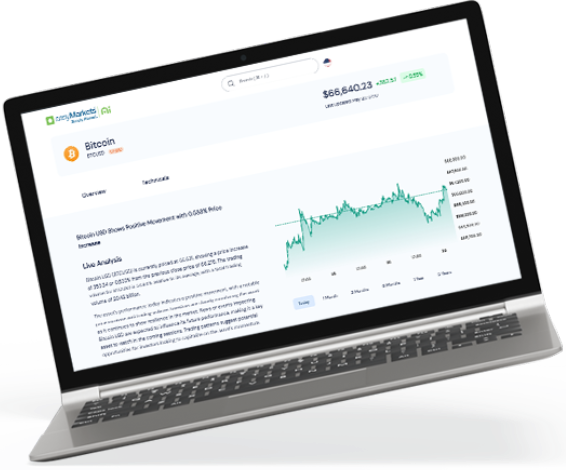What Do I Need to Get Started
So you've learned the ins and outs of trading then put these skills to the test with a demo account, and now you decide that you're finally ready to open a real trading account. The question is, how much money should you start off with? Here are some factors that you need to consider.
First and foremost, it's essential to find out how much the minimum account deposit is required by your broker to open an account.
Get Started
Minimum account balance
First and foremost, it's essential to find out how much the minimum account deposit is required by your broker to open an account. Keep in mind that you should only be trading the money that you can afford to lose, especially since there are plenty of risks involved in the financial markets.
Also, it might help to not put all your money down at once, as you might need to save some capital to invest in your trading equipment or software. Besides, it's a known statistic that majority of first-time traders wind up blowing their first accounts so it may be helpful to have some cash as backup to enable you to open another account once you've gotten a better hang of trading.
Another factor worth noting is the minimum withdrawal amount, as this may also vary from broker to broker. Some don't impose a minimum withdrawal amount, particularly for credit card transactions, but some bank transfers might need at least $50 per withdrawal. This means that you might want to open an account that is larger than the minimum withdrawal amount so that you may stay in the markets and keep your account open even if you withdraw some of your profits.
These days, there are several brokers that may allow you to open an account for as low as $10, which might sound like a pretty sweet deal along with 1:100 leverage. You have to remember, however, that a low account balance with a high leverage may make you more exposed to margin calls so it makes more sense to fork over a few more bucks to help you stay in your positions for much longer even with large price swings.
Avoiding margin calls
It might be helpful to think of trading as a business wherein being undercapitalized means that you're setting yourself up to fail. For instance, if you open a trading account with only $25, thinking that you may rake in enough profits to eventually double or triple your capital, you might find that it's actually faster to get all these funds wiped out with a margin call.
Consider a beginner trader who opened his very first account on just $25. He decides to buy one mini lot of USD/CHF at an exchange rate of 1.0000, which translates to $1.00 per pip movement. This means that a drop of 10 pips would equate to a loss of $10 and a 10-pip rise would equate to a gain of $10.
Now let's say he is trading on 10:1 leverage, which means that he needs to keep 10% in margin or $2.50 as good faith deposit with his broker. If his equity falls below this level, then his open positions would be closed automatically and he would shoulder the loss, even if it means getting his account wiped out.
With only $25 in capital and a mini lot position on long USD/CHF open, this means that a drop of just 22.5 pips may be enough to trigger that margin call since it would bring his remaining equity to just $2.50... and that's without factoring the spread or other transactions costs that may be incurred! Now keep in mind that USDCHF typically moves at an average of 70 pips per day, which means that volatility alone may be enough to erase such as a small account.
Consider, on the other hand, a trader who has learned his lesson and saved up to open a $10,000 account at 10:1 leverage. He can buy one mini lot of USD/CHF and may stay in this position even if the pair moves 100 pips against him because his remaining equity is still way above the margin call level even with above average volatility. The pair can even move 500 pips against him and he'd still be able to avoid a margin call!

Cost of Spread
As mentioned earlier, the spread and other potential transactions fees also come into play when figuring out how much capital to start off with. The reason is that these costs, although they might be minimal, may add up and affect your bottom line profitability.
Of course it's also helpful to note how much leverage you're dealing with so as to not magnify these costs in such a way that it would slowly dig a hole in your account. For instance, having a mini account with $500 will already cost you $25 in transactions costs if you buy five mini lots of GBPUSD at a 5-pip spread.
Fortunately easyMarkets offers narrow and fixed spreads that may minimize these risks and trading costs. To help you with calculating how much capital you need to start with, we suggest looking at our table of spreads for each currency pair and financial instrument offered on our trading platforms here.

Trading Style
Last but certainly not least is your trading style, which dictates how long you plan on keeping your positions open and how much volatility your account can withstand. If you're a swing trader that likes to keep trades open for days or weeks, you need to consider the average volatility of the pairs you are trading and make sure that these potential price swings may be weathered by your account. Longer-term trading strategies may be more appropriate for larger accounts so that you can stay in the markets for much longer.
Of course this doesn't necessarily mean that short-term traders or scalpers can do away with a tiny account. For these trading styles, the cost of spread may be a much larger consideration as the frequency of trades means that the account may be more exposed to these trading costs.















